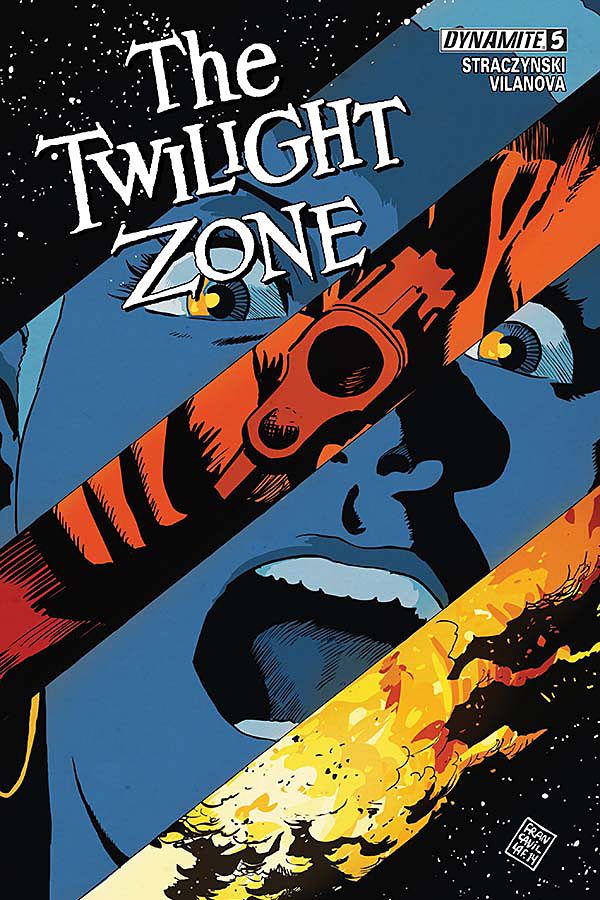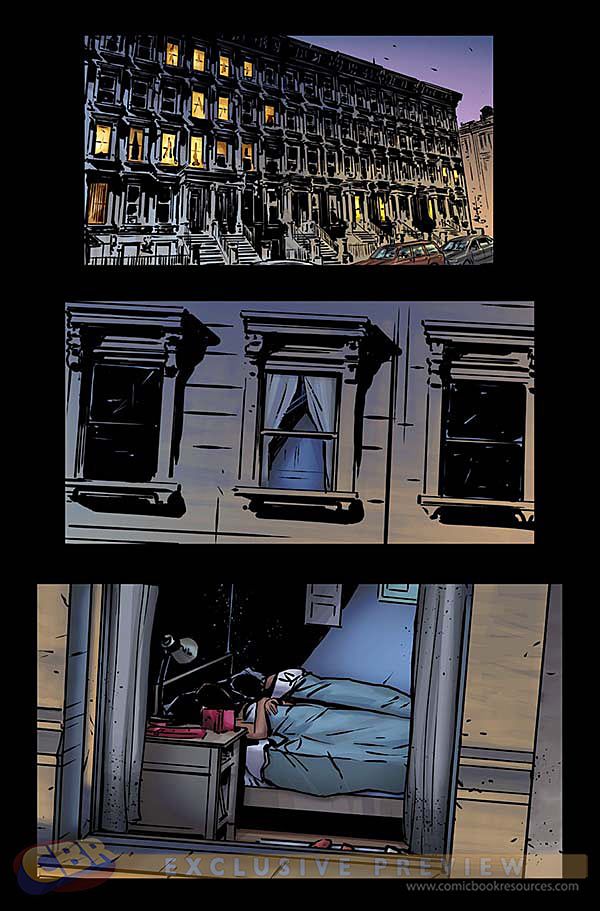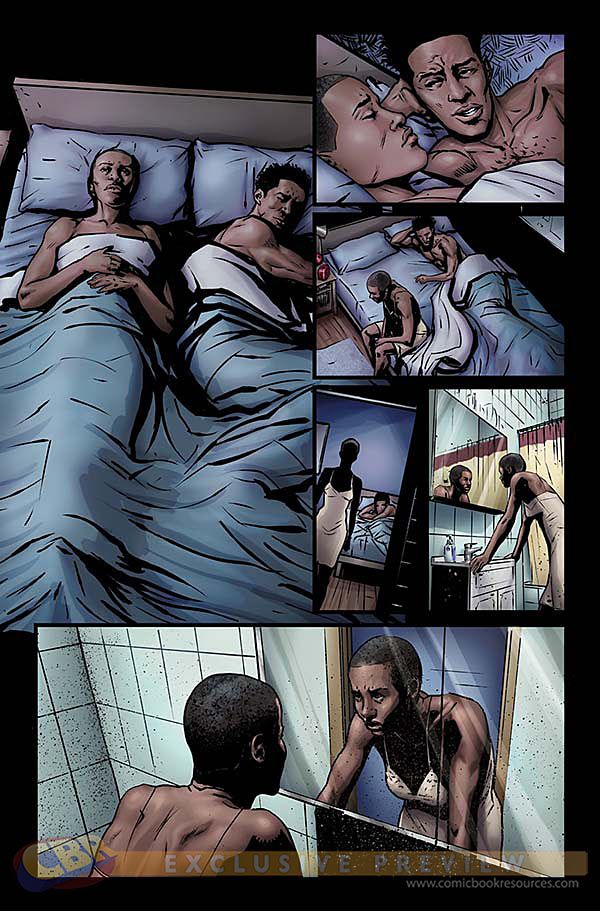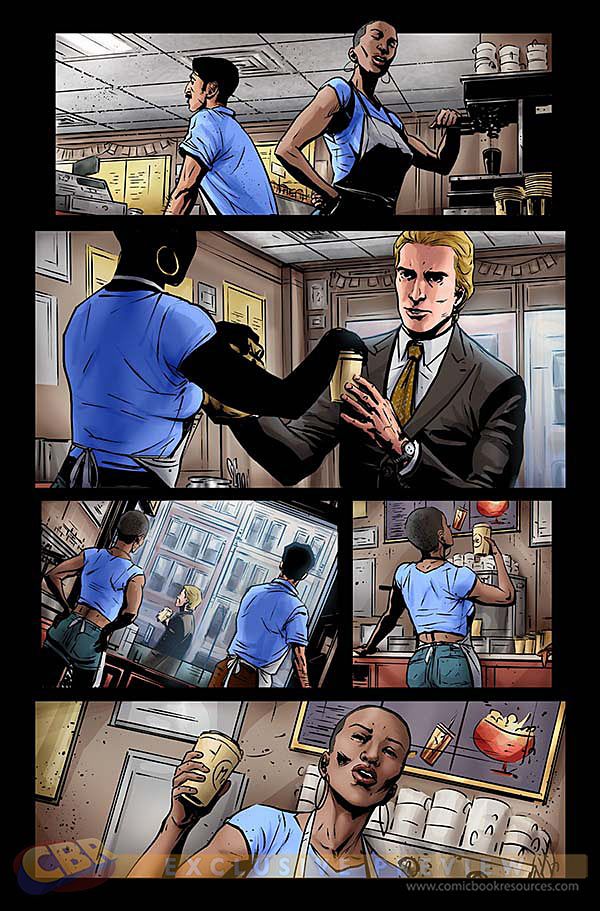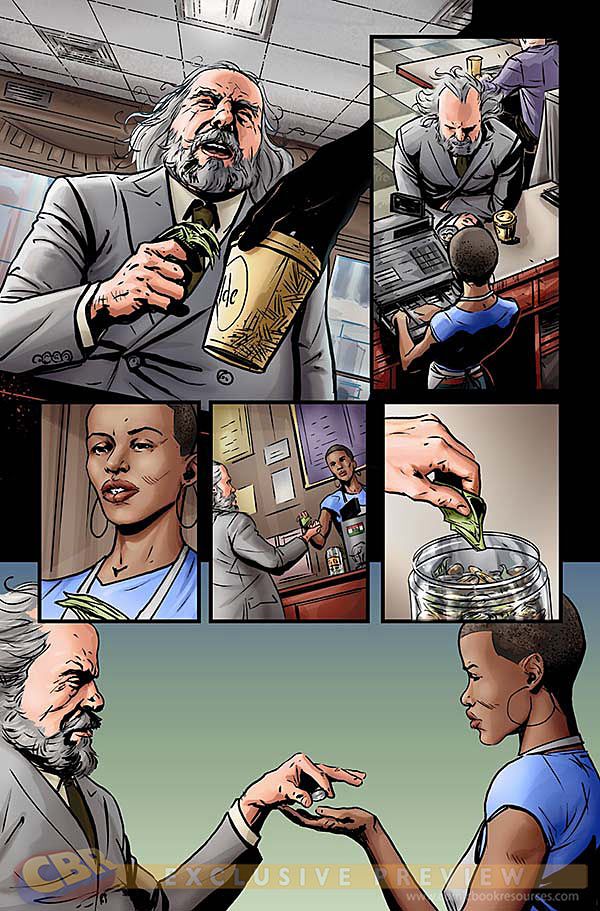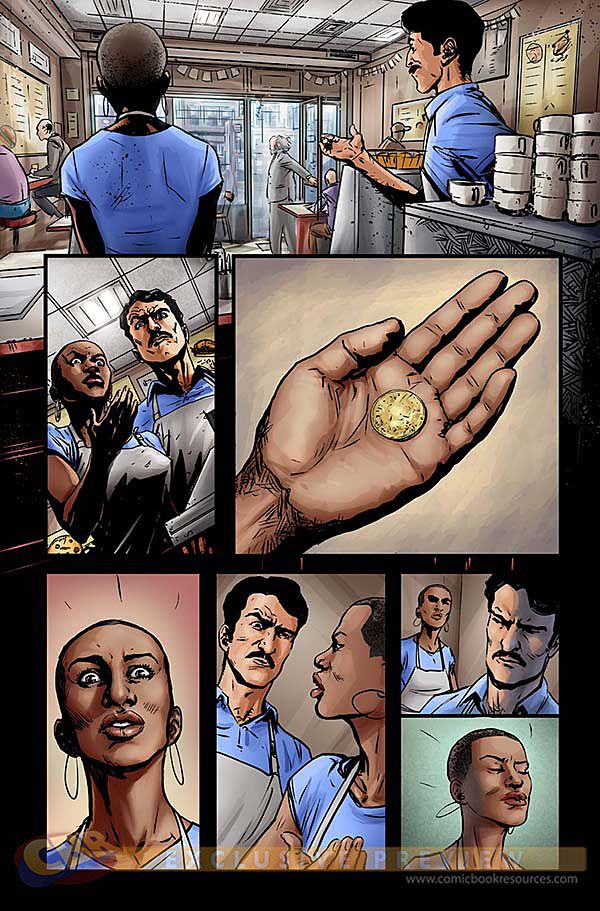The Twilight Zone has often been portrayed as a private Hell for each new protagonist, an entirely subjective experience. Ruination arrives as a pair of spectacles shatter on the pavement, or in the closure of a wax museum cherished only by its caretaker. It's comeuppance, personal to the point of poetry.
Now entering the second arc of Dynamite Entertainment's "Twilight Zone" ongoing, writer J. Michael Straczynski and artist Guiu Vilanova build on the notion that the so-called "fifth dimension" might touch all of us, from a callous millionaire to the humble barista handing him his coffee. They each experience it in their own unique way, but rarely -- if ever -- has the Zone ushered in wary travelers from such close proximity, as if this were all part of a spreading infection.
RELATED: Dynamite & JMS Enter "The Twilight Zone"
When CBR first spoke to JMS about this project last summer, he laid out a plan for three seemingly independent tales of the Twilight Zone as told over the course of 12 issues. The intention was always for those stories to overlap, so that by the end, a fourth story might emerge. Or perhaps those three stories might coalesce into one larger narrative.
We met this next traveler, Diana, in the very first issue, hovering in the background of Trevor Richmond's story. Now it's her turn to take center stage in next month's "Twilight Zone #5." Though, as the preview at the end of issue #4 more than suggests, Diana could well be upstaged by a massive nuclear explosion.
CBR News spoke with JMS about depicting the Twilight Zone as a web, its 'victims' brushing elbows, and the ever-present voice of series creator Rod Serling.
CBR News: Who is Diana?
J. Michael Straczynski: Diana Westby works at the coffee shop where Trevor Richmond, our protagonist (or perhaps antagonist) from the first arc would stop in for an egg sandwich and coffee every morning. She's the kind of person he barely notices, that most people probably never give two thoughts to, but she is about to play a vital role in a story with millions of lives at stake depending on what she chooses to do.In our second story, "The Way In," which starts with act one, she suddenly finds herself able to see into people's thoughts and glimpse the future.When she uncovers a plot involving a pocket nuke, and no one else will believe her because of how she learned it, she will have to decide just how far she's willing to sacrifice herself to save others.
Is it possible that we've already met the third player in this fugue?
Yeah, the three players are Trevor, Diana, and Ben Chambers, the private investigator hired by Jason Black (Trevor's boss) to try and solve the mystery of his son's murder years earlier. Each four-issue arc starts at exactly the same moment, so it's three perspectives on the events of the same period of time as inexplicable or terrifying things happen to these three characters. In each arc, the other two play out in the background, and we catch glimpses here and there as to what's happening in those stories.(So in issue four of the first arc, you see a flyer from the anti-war rally Jason's son organized years earlier -- nothing special about it -- look again, and now Ben is in the photo with the son, implying that he's somehow gone back. The trick is to make the three stories complete as they are, but when you put them together, you get a much larger, fourth narrative.I can never seem to do anything easy.
CBR TV: JMS on Joe's Comics' Secret Origins, "Ten Grand's" Future & "Sense8"
Do we each have a Twilight Zone awaiting us? Is it all the same place?You seem to have created a bit of a web.
If there's a commonality of purpose or theme in the Zone, it's that we are the inheritors of all our good or bad choices. Nearly everyone who comes to a bad end in a Zone episode had it coming, they prepared the way and walked through willingly, through greed, cupidity, stupidity or hate. Similarly, those who walk into the Zone on a purer path often find themselves on the path to redemption of one sort or another.So yeah, there's a Twilight Zone waiting for all of us, because sooner or later the consequences of our actions come home to roost. We are all the sum total of our choices.
You've spoken of original "Twilight Zone" show-runner Rod Serling's precision as a storyteller, that knack for the mot juste. Do you hear his voice, his cadence, as you draft those opening and closing monologues? Does he remain a character in the ongoing chronicle of the Twilight Zone, even if off-screen, off-panel? I know I heard that voice.
One of my weird little knacks or tricks as a writer is that I'm a good impersonator.I can write in a variety of styles and voices. I can do a pretty good imitation of H.P. Lovecraft, for instance, or Hunter Thompson, or Christopher Fry, or Rod.I can turn it on and just listen to them and write down what they say.Serling has a fascinating style -- he can go very prosaic and straightforward for some things, but then every so often he floors the accelerator and takes the English language out for a spin.So you have to carefully ride those rhythms to replicate that style. When I had to write those narrations in Rod's style, I spent easily as much time on those few paragraphs as I did on most of the book.All of that said: what I do there is an imitation of Rod, but Rod was and remains the original, the real deal.I'm just a photocopy of a photocopy.
Anyone who's watched Serling's own teleplays knows something of his concerns. He hated tyrants. He worried about the sins of the past enveloping the future in radiation, or worse, fascist regimes. It strikes me that your opening story is about a tyrant and that it ends with this dual epilogue/prologue featuring a towering mushroom cloud. How much of that is simply the language of the Twilight Zone property and how much is that a kinship with Serling as someone who writes fiction as a way to examine?
I think it's a little of all those things.The third area he tended to write about a lot concerned his nostalgia for the past, and how things today might somehow affect the past. So that hits the third arc we're doing.The key is to not just do the story elements that have been done before, but to put them against a new backdrop and modernize the elements.Serling never considered his writing retro, he was trying to do as much a cutting edge show as he could under the social and technological constraints of the time. Which led directly to my decision to do something structurally that I don't think has been done before, in terms of the three interlacing arcs that cover the same period and then warp into a fourth narrative.You combine the familiar with the new.
That was the fun of "The Twilight Zone" for Rod, and that's very much the fun of it for me.So I hope that fun translates to readers who might want to check it out with this next arc.You don't have to have read the first arc to follow this one.Each, at its core, is about the human heart and the hard choices we must make as we face the unknown -- and the consequences we all must confront in our own personal Twilight Zones...
"The Twilight Zone" #5 enters our reality on May 28, 2014.


